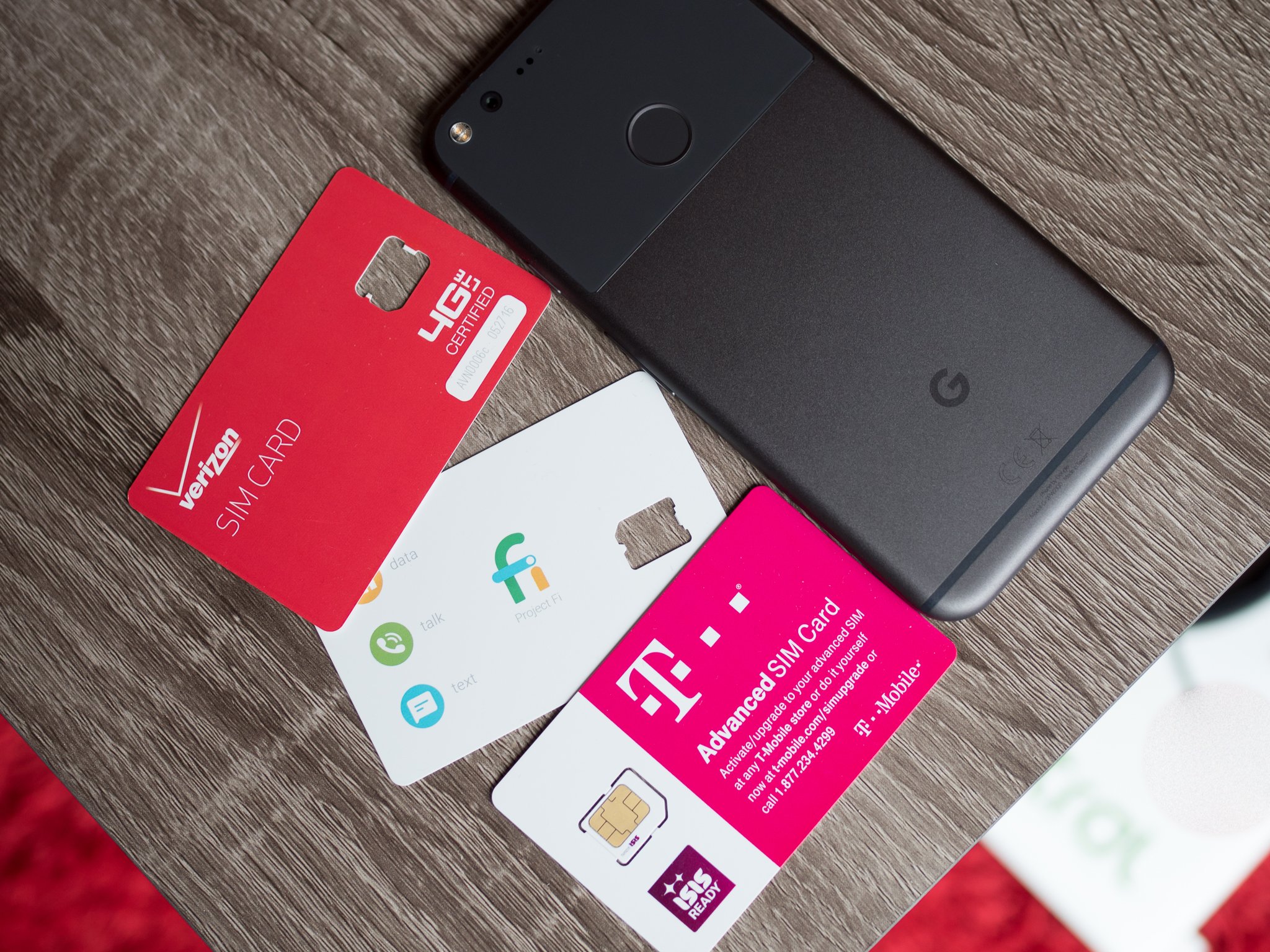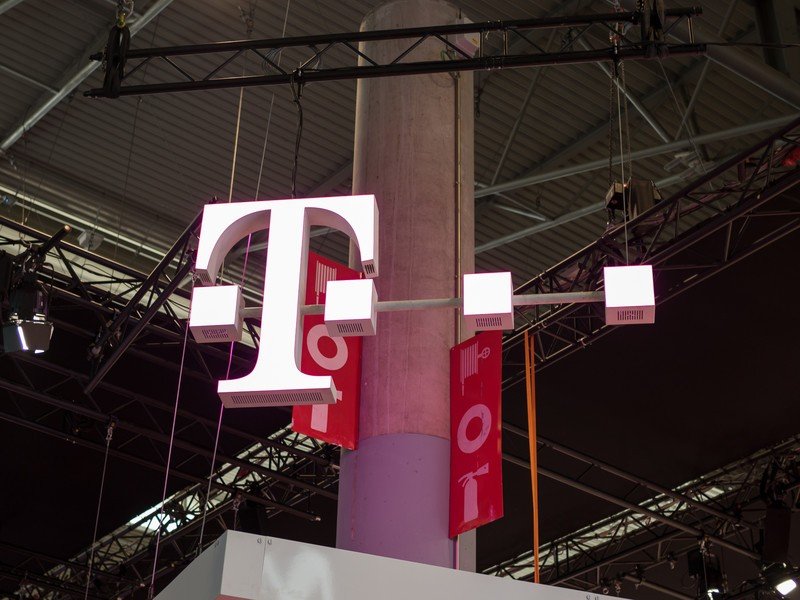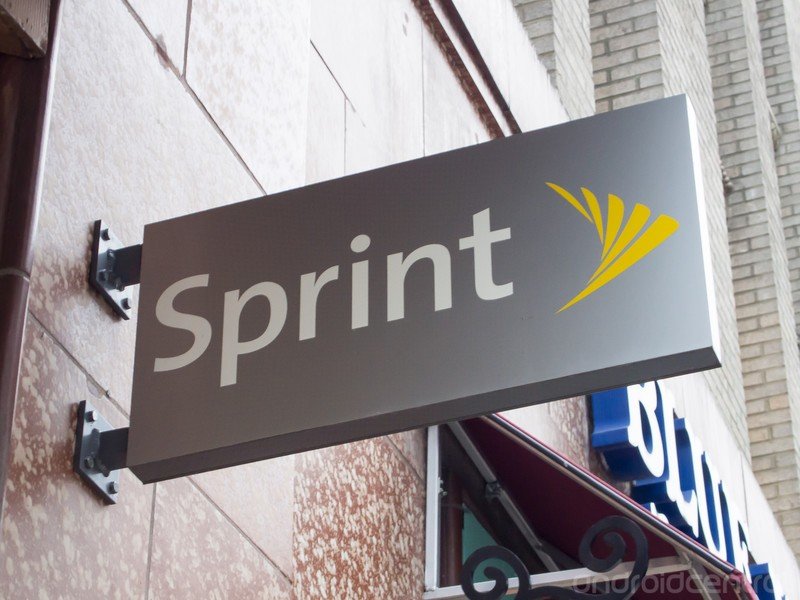Carrier report card: How we rated the Big Four U.S. networks in 2017

As part of any year-end roundup worth its salt, it's time for a look at how the companies who provide our phone service did over the last 12 months.
For most people, talking about a cell phone provider is not sitting high on a list of interesting things. And that's great, maybe even the way it should be. The best carrier for you will be the one that's just there and works without any unnecessary fuss or fiddling, and as long as you send it a few dollars every month, there is nothing to talk about. That means picking the right carrier is one of the most important things about having an Android phone.
We're going to look at four areas that make a big difference in how much we love our phones and see how each carrier did in them. And we're going to be grading their performance and talk about how the grades were earned. It's fun (and important) to judge things this way!
The Network

A look at a map will tell you why it's impossible for any carrier to cover all of the U.S. Any company that would try to provide top-tier performance for every location inside our borders would quickly run red ink and disappear — the country is too big. Thanks to newer technology and the ever-increasing population, things are better than they used to be, but we have a long way to go before we can say any company has you covered everywhere.
In this category, both total coverage and good coverage matter. The way we tend to use our phones means that low-speed or spotty service is no better than not having any at all. This is based on our experience, feedback from users, and actual real-world experience rather than coverage maps.
- Verizon: B+. Verizon once again has the best overall coverage in the U.S. and it's getting even better. In 2017, Verizon quietly continued to expand coverage in rural areas and tried to keep providing the same excellent service available in metropolitan centers. Unlimited data plans, however, did have a major impact on LTE network speed averages. OpenSignal noted that average data speeds on Verizon's LTE network slowed to 14 Mbps and we're reading the same experience from users around the web. Anecdotally, we're not seeing a dramatic difference in the areas we live, work, and play here, but all signs say they exist.
Where Verizon can improve: Find a way to deal with congestion. No matter how much bandwidth is available in total, it's shared bandwidth. More people using more data makes it difficult to spread it all around and users aren't very happy with ideas like throttling or spotty performance. Verizon isn't afraid to spend money on equipment when it needs to, and this is a tough thing to fix that will need plenty of money.
- T-Mobile: B. While T-Mobile can't boast when it comes to total coverage, the company can claim to have the most reliable service in the places it does cover. Network availability and speed in metro areas is strong, and OpenSignal claims that T-Mobile outperforms even Verizon here. Our experience supports this, as does user feedback. Not having the same network footprint as Verizon can't be ignored, though.
Where T-Mobile can improve: Rural coverage. It's well-known that finding the spot where T-Mobile goes from great to non-existent isn't difficult. Usually, you only need to drive a few miles from any town or interstate to see things go from good to bad and even T-Mobile is aware they need to step it up outside their comfort zone. The 600 MHz spectrum is the fix and T-Mobile is positioned to use it.
Get the latest news from Android Central, your trusted companion in the world of Android
- AT&T: C. A "C" grade means average, and that's exactly what AT&T's network in 2017 earns. It too experienced a significant slowdown in network speeds when an unlimited plan was made available in OpenSignal's testing, though not as dramatic as Verizon's with speeds dropping by just 1 Mbps to 13 Mbps on average. Network availability remains mostly unchanged since last January, as does the total network footprint. AT&T's network performance is steady and stable in our testing and according to user feedback. A healthy "C" grade fits perfectly.
Where AT&T can improve: Like Verizon, AT&T has coverage in almost any location. Maintaining the level of service throughout the year in the face of more customers using more data is impressive, but we think AT&T could better utilize its fiber optic cable network to bring a faster and more reliable service to more customers. Without increasing the rates for either.
- Sprint: D. Sprint was in a tough spot all around in 2017. It is doing a fair job improving its existing network, though not at the pace we would like to see, but expansion seems to have stopped. OpenSignal noted that in several locales like Cincinnati, Sprint had both the best speed and reliability, so they are capable of going toe-to-toe with any other company in existing markets. Our anecdotal evidence has Sprint outperforming every other company in the western DC suburbs and maintaining the same level of service in other markets. Plenty of users can report the same, but more people have a very different experience.
Where Sprint can improve: Money. For the past few years, it seems that every plan to turn Sprint around has failed. The growth we hoped to see when SoftBank acquired 70% of the company in 2012 never really materialized and we once again saw attempts to consolidate and merge Sprint into another company. Sprint owns very valuable assets and has control over plenty of spectrum. With the right leadership, it could eclipse the competition.
Customer service

Of of the perks that come with using a "big four" carrier is the level of customer service you receive when compared to pre-paid service or an MVNO. We expect to be taken care of when we're spending more money, and each carrier tries to deliver it. Some did well, while others struggled.
- Verizon: A. By all accounts, Verizon excels when it comes to customer service. For every horror story, you'll see there is a counterpoint where Verizon has gone above and beyond to offer support. Offering tech support for users of such a complicated service is difficult, and Verizon does it best.
- T-Mobile: B-. T-Mobile may not have the expansive online tools that Verizon has (which the grade reflects), but they have mastered one very important area when it comes to customer service — social media. Tweet or message a support issue to T-Mobile's army of social media experts and you'll get a response almost every time. That's impressive.
- AT&T: C. Once again AT&T comes in with a "C" grade because there hasn't been much change. AT&T offers good customer service to subscribers (with pre-paid support for Cricket users a highlight) but the company hasn't gone the extra mile to improve dramatically in any area. This isn't a bad spot to be in, but we would like to see AT&T get even better here.
- Sprint: D. I don't want to give Sprint a failing grade when it comes to customer service because of one reason — the dedication of their support staff. We've mentioned how leadership and money remains a big problem for Sprint and its customer service reflects this. While we can't see any one area where Sprint is doing a great job at the corporate level, we can say that the employees are doing their best with what they have. Hard work and dedication of support staff deserve to be rewarded and because of the sincere desire to help we see from the people on the phones and on social media they garner a "D" grade instead of failing outright.
Service plans

It's not just the number of plans or the price that matters here. A company needs to provide the right plan for everyone (or as many users as possible) with the right features at the right price. Every carrier did well here in 2017, and we couldn't be more pleased!
- T-Mobile: A+. No more games with unlimited plans from T-Mobile. Calls, texts, and data (up to a whopping 50GB before any throttling) with a clear policy on high-resolution streaming are now the norm. Add in a cheaper option for seniors and you get that "A" grade. Paying all the taxes and fees gets that A+.
- Sprint: A. Sprint's unlimited plans simply can't be beaten. Excellent pricing and few restrictions on service are exactly what we want to see from a service provider and Sprint does both. If it ever gets the network in shape, Sprint could be our top pick for the best unlimited plan. We also have to mention that Sprint's unlimited plans are priced so well that there isn't much need for tiered data plans on its network. We like what we see from Sprint when it comes to service plans.
- Verizon: A. Unlimited data made a triumphant return to Verizon in 2017, and small snafus with streaming resolution are negated with a quick realization that two tiers of unlimited data plan better serve both the customer and the bottom line. Well done, Big Red. Well done indeed.
- AT&T: A. Like Verizon, seeing an unlimited plan return to AT&T was unexpected but welcomed. Seeing it include 10GB of LTE tethering blew our minds — nobody ever expected AT&T to include tethering on an unlimited plan. If you're not a DirecTV subscriber, the top tier plan can be a bit pricey but millions of iPhones and Galaxy phones are chewing through more battery power than ever now that unlimited on AT&T is back. That is a good thing.
Every carrier did great here and that means the real winners was all of us.
Phone selection

This gets ignored too often when it comes to talking about carriers and how they are doing. We're looking at both the phones a carrier sells and unlocked phones that work on the network as well as the company policy when it comes to using them.
- AT&T: A / T-Mobile: A (tie). No surprises here. Both AT&T and T-Mobile sell the most popular flagships from Apple and Samsung, decent mid-range phones from other names we know and trust like LG or Motorola, and entry-level phones for people who aren't tethered to a touchscreen all day and don't want to be or can't afford it. What gives each carrier an "A" grade is their network technology for both voice and data. GSM is the worldwide standard and there are very few unlocked phones sold that won't work on either.
- Verizon: C. We never thought we would see the day when all phones sold from Verizon were SIM unlocked and you were able to bring a phone with compatible network bands to use as an LTE-only device to Big Red. This might be a requirement for the spectrum Verizon was awarded, but the lack of resistance to the idea is awesome and we're glad it stopped. What keeps Verizon from getting an outright "A" grade is not something they can fix for a while — a CDMA network. You need a phone number and service to make calls and send texts, and Verizon isn't able to certify most unlocked devices for VoLTE. It's great that the HTC U11 "works" on Verizon. It's not great that the OnePlus 5T doesn't.
- Sprint: C-. Sprint is a huge company that phone manufacturers want to support, even though you only hear the bad news about it. All the big names in mobile offer their best devices through Sprint and a wide selection of inexpensive phones are available, too. What keeps Sprint from getting an above-average grade is both their CDMA network and their list of "approved" unlocked phones. The network is something they can't change right away (though like Verizon, they are working on it) and unlocked phones must be able to use Sprint's CDMA network to get service. On the plus side, it's easy to get your Sprint phone unlocked. On the minus side, many Sprint phones don't support the LTE bands you might need with another carrier.
2017 was a good year
The return of unlimited data to AT&T and Verizon capped a great year where we saw T-Mobile continue to push towards the top and Sprint maintaining their presence as a top-tier provider despite the odds against it. Other highlights were T-Mobile eating the fees and taxes on your bill, Sprint making family plans almost free after you pay for the first line, and seeing all of the major carriers reacting to each other to give us more and better choices when it comes to phone service.
Here's hoping 2018 is even better!

Jerry is an amateur woodworker and struggling shade tree mechanic. There's nothing he can't take apart, but many things he can't reassemble. You'll find him writing and speaking his loud opinion on Android Central and occasionally on Threads.
